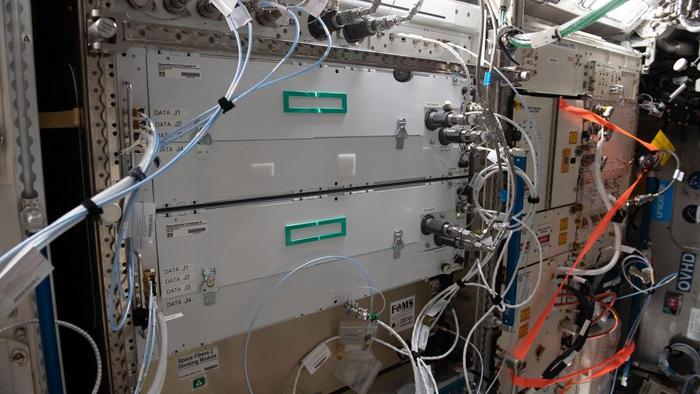Microsoft and HPE are bringing artificial intelligence (AI) and big data analytics into space. In February, they sent HPE’s “Spaceborne Computer-2” to the International Space Station (ISS). In a blog post, Microsoft describes the device as a “supercomputer the size of a small microwave oven connected to the cloud from space.” It consists of the HPE Edgeline EL4000 Converged Edge System and the HPE ProLiant DL360 Gen10 server.
“Spaceborne Computer-2” can process large amounts of data and implement artificial intelligence algorithms directly at the source. This is very useful for space exploration missions, as it means that less data must be transmitted to teams on the ground. In a similar way, researchers had AI-type monitoring images on a satellite in orbit a few months ago before sending them back to Earth.
Astronaut DNA Sequence
Among other things, Microsoft researchers are using the supercomputer on the International Space Station to conduct an experiment to monitor the health of astronauts. The goal is to sequence their DNA on a regular basis in order to identify potentially harmful genetic mutations. The danger lies in this during long spaceflights, during which astronauts are exposed to increased radiation. The sequencing results should be compared to a large clinical database that is constantly updated on the ground.
Problem: The amount of raw data (about 200 GB) sent for this purpose is too large for the NASA downlink. The space agency only provides a maximum download speed of 250 kbps for two hours per week. “It’s like going back to the phone modem from the ’90s,” said David Weinstein, head of software development for Microsoft’s Azure Space division.
Selective filtering of genome data
Given this limitation, the researchers first allowed the computer to compare the extracted genetic sequences with reference DNA segments. Then, the supercomputer transmits only the variations or mutations to the cloud. The genome segments suspected of abnormalities are then compared in turn to the National Institute of Health’s database to determine their health effects.
The trial was successful and demonstrated the added value of the edge-to-cloud workflow for the International Space Station, says Gabe Monroy, Head of Developer Experience at Azure. Without pre-processing the sequencing results, more than 150 data would have to be sent back to Earth and the transmission would take more than two years. On the other hand, the filtered data reached Earth in just over two hours.
By the way, the technology NASA uses doesn’t always have to be entirely new. For example, the space agency uses an iMac processor from the 1990s for the Mars rover, as you can read here.

“Prone to fits of apathy. Zombie ninja. Entrepreneur. Organizer. Evil travel aficionado. Coffee practitioner. Beer lover.”







More Stories
Raspberry Pi5 as desktop replacement after 5 months
Windows 11: Update brings ads in start menu
Voyager 1 is once again sending data from deep space